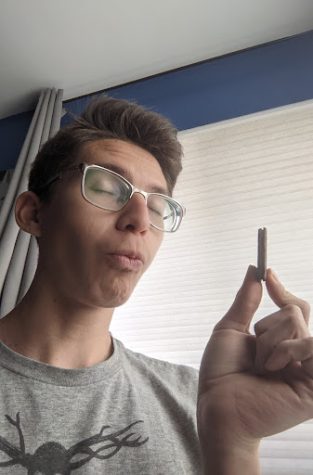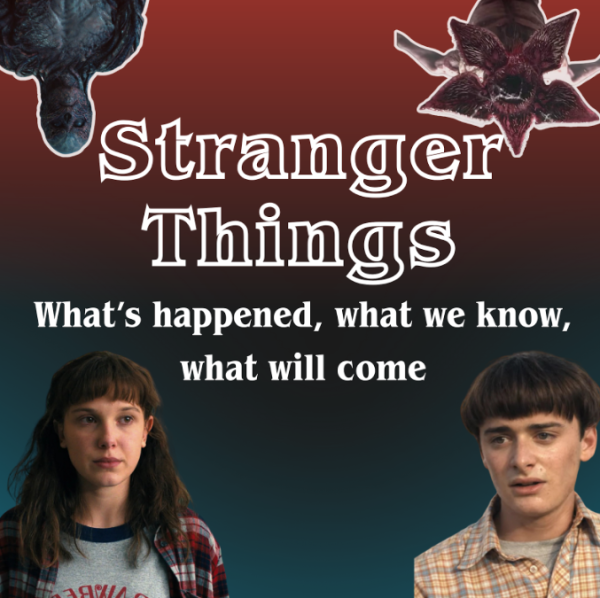Tux and Fanny Movie Review
Picture by Diego Caceres
Grab a coffee while you watch Tux and Fanny.
I love the thrill of watching movie trailers. It inspires my imagination and sparks hope that the film lives up to my expectations. But when you’re watching the movie, it’s hard not to compare it to your expected hopes and dreams.
That’s how I felt watching “Tux and Fanny,” a charming indie film created by Albert Birney. It follows – you guessed it – Tux and Fanny, two pixley Russians that resemble humans. They play soccer, dance, and do a whole lot of nothin’.
I discovered the film by looking through Letterboxd for high-ranking animated movies. I just so happened to click on the highlighter pink poster of “Tux and Fanny,” which surprisingly earned high ratings (for a film I’ve never heard of). I looked it up, watched the trailer, then browsed its YouTube channel.
The videos seemed strange. For one, they spoke in Russian; two, it looked animated on an old-fashioned Windows computer; and three, it used a lot of silence. In episode 150, after excavating Claude the Ghost’s skeleton, Tux and Fanny finally return home to put him to rest. The two prepare Claude’s gravesite, lay him inside the ground, then bury him, prompting Claude’s spirit to ascend into the sky. Tux and Fanny share a beautiful moment observing the nature surrounding them: a deer munching on grass, a bunny hopping along. It’s subtle, but you can tell they appreciate life. I knew then that I had to watch the movie.
There are similar quiet moments in the movie. Tux, the pink male character, often has little existential moments that stick out against all the comedy and wacky shenanigans. For example, while drinking hot chocolate, Tux compares the “buoyant” marshmallows fighting relentlessly to stay afloat to humans. It’s subtle but made me think about life. I love these moments, but they’re too few and far between.
This brings me to the pacing. As I mentioned, the movie is filled with wacky scenarios that the characters must confront. Plot points include Tux flying away on his cast, Tux and Fanny transporting a magical acorn to the ocean, and looking for their lost cat Sasha. These are by no means bad story ideas—they’re creative and kept me intrigued—but since the movie pulled its material from the episodic YouTube series, every few minutes feels like something entirely different. One moment, the duo is looking for their cat in a mysterious forest; the next, they’re playing soccer or riding sleds in the snow. There’s hardly anything to cling to; before getting a chance to savor each moment, Birney introduces “the next thing.” This style of pacing got me antsy, and I struggled sitting through the full 90 minutes.
While the style may feel jumpy, it kept the movie entertaining. Birney plays with random ideas, from getting stuck in a computer to body disfigurations. For example, in just the first few minutes, Tux dies; ants eat him alive, trying to clean peanut butter off his body. This shocked me. I was intrigued by how the writer would work around this dilemma. It turns out Tux can still talk, walk, and act like himself but moves around as a skeleton. Fanny knits him a new skin suit and makes sure to leave an airhole in his skin for the pet chicken living in his ribcage.
That’s another thing I love about this movie: the continuity. For the entire movie, Tux is dead, carrying around the ribcage-chicken for half the movie until finally releasing it into the wild. But the hole doesn’t go away; it’s still there in his skin (even in the most recent episodes on the YouTube channel). Everything happens knowingly and is never forgotten, and often recurs in the form of hidden references. I like this. It makes the film feel original and spontaneous, like the writers know what they’re doing.
However, some of the ideas feel like mindless content. For example, there are multiple style changes throughout the movie, like changes to claymation, digital animation using computer code, and even an entire segment devoted to fan-made animations. While it may look cool, it feels meaningless and redundant after the first few times.
Overall, I thought the film was worthwhile for the quiet moments. In my opinion, anyone interested in watching the movie should watch the clips on YouTube instead; at least by watching episodes one by one, they no longer feel like a jumbled glob of story ideas.
So while I did like the quiet moments, the commitment to consistency, and the spontaneous feel, the jumpy pacing and lack of story made the experience feel more dreadful than enjoyable. I felt conflicted after watching the movie because it didn’t meet my expectations. At least I still have the memory.

Hi there! My name is Diego Caceres, and I’m the Editor-in-Chief for The Ubiquity, which means I edit articles and approve everything posted on the website....






